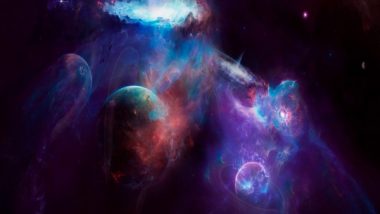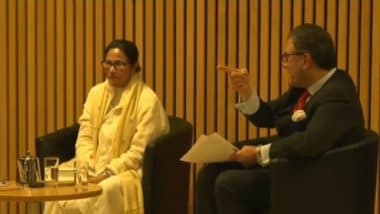Trieste, February 1: One of the most relevant and pressing questions in modern astrophysics and cosmology is: "How many black holes are out there in the Universe?" A recent study by the Italian research institute, Scuola Internazionale Superiore di Studi Avanzati (SISSA), has shed some light on this.
In the first paper of a series just published in 'The Astrophysical Journal', the authors have investigated the demographics of stellar-mass black holes, which are black holes with masses between a few to some hundred solar masses, that originated at the end of the life of massive stars.
Also Read | Chinese New Year 2022: Wishes, Messages, Greetings and Images to Send on CNY.
The paper was led by the SISSA PhD student Alex Sicilia, supervised by Prof. Andrea Lapi and Dr Lumen Boco, together with other collaborators from SISSA and from other national and international institutions.
According to the new research, a remarkable amount around 1 per cent of the overall ordinary (baryonic) matter of the Universe has been locked up in stellar-mass black holes. Astonishingly, the researchers have found that the number of black holes within the observable Universe at present time is about 40 x 1018 (i.e., 4 followed by 19 zeros!).
As the authors of the research explained: "This important result has been obtained thanks to an original approach which combines the state-of-the-art stellar and binary evolution code SEVN developed by SISSA researcher Dr Mario Spera to empirical prescriptions for relevant physical properties of galaxies, especially the rate of star formation, the amount of stellar mass and the metallicity of the interstellar medium (which are all important elements to define the number and the masses of stellar black holes)."
"Exploiting these crucial ingredients in a self-consistent approach, thanks to their new computation approach, the researchers have then derived the number of stellar black holes and their mass distribution across the whole history of the Universe."
Alex Sicilia, the first author of the study, commented: "The innovative character of this work is in the coupling of a detailed model of stellar and binary evolution with advanced recipes for star formation and metal enrichment in individual galaxies. This is one of the first, and one of the most robust, ab initio computation of the stellar black hole mass function across cosmic history."
The estimate of the number of black holes in the observable Universe was not the only issue investigated by the scientists in this piece of research. In collaboration with Dr Ugo Di Carlo and Prof. Michela Mapelli from the University of Padova, they have also explored the various formation channels for black holes of different masses, like isolated stars, binary systems and stellar clusters.
According to their work, the most massive stellar black holes originated mainly from dynamical events in stellar clusters. Specifically, the researchers have shown that such events are required to explain the mass function of coalescing black holes as estimated from gravitational wave observations by the LIGO/Virgo collaboration.
Lumen Boco, the co-author of the paper, commented: "Our work provides a robust theory for the generation of light seeds for (super)massive black holes at high redshift, and can constitute a starting point to investigate the origin of 'heavy seeds', that we will pursue in a forthcoming paper."
Prof. Andrea Lapi, Sicilia's supervisor and coordinator of the PhD in Astrophysics and Cosmology at SISSA, added: "This research is really multidisciplinary, covering aspects of, and requiring expertise in stellar astrophysics, galaxy formation and evolution, gravitational wave and multi-messenger astrophysics; as such it needs collaborative efforts from various members of the SISSA Astrophysics and Cosmology group, and a strong networking with external collaborators."
(This is an unedited and auto-generated story from Syndicated News feed, LatestLY Staff may not have modified or edited the content body)













 Quickly
Quickly





















